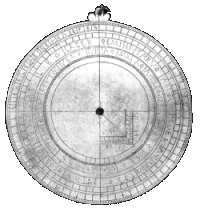- About MAA
- Membership
- MAA Publications
- Periodicals
- Blogs
- MAA Book Series
- MAA Press (an imprint of the AMS)
- MAA Notes
- MAA Reviews
- Mathematical Communication
- Information for Libraries
- Author Resources
- Advertise with MAA
- Meetings
- Competitions
- Programs
- Communities
- MAA Sections
- SIGMAA
- MAA Connect
- Students
- MAA Awards
- Awards Booklets
- Writing Awards
- Teaching Awards
- Service Awards
- Research Awards
- Lecture Awards
- Putnam Competition Individual and Team Winners
- D. E. Shaw Group AMC 8 Awards & Certificates
- Maryam Mirzakhani AMC 10 A Awards & Certificates
- Two Sigma AMC 10 B Awards & Certificates
- Jane Street AMC 12 A Awards & Certificates
- Akamai AMC 12 B Awards & Certificates
- High School Teachers
- News
You are here
Gerbert d'Aurillac and the March of Spain: A Convergence of Cultures - The Surprising Mathematics of Gerbert
Gerbert was proficient in two subjects that may well have impressed and astonished an emperor and a pope – the use of an astrolabe, and calculating with Hindu-Arabic numerals. Both topics, as we shall see, were well-known to Eastern scholars in the tenth century, and were transmitted to the West through the monasteries of Spain.

The astrolabe was an astronomical device widely-known in the East; its use was described in several documents of the time. One of those documents, the Sententiae Astrolabii,was translated in the tenth century from Arabic into Latin by an obscure scholar named Lupitus of Barcelona. It has been suggested that the original manuscript was in fact the work of the great al-Khwarizmi. At any rate, we know that there was a copy of it in the scriptorium of the monastery at Ripoll during the years when Gerbert was there.
Gerbert described, in his Geometria, how to use an astrolabe to find the altitude of a triangle – a use far from its intended astronomical uses. Later, when he was appointed the head of the cathedral school at Rheims, he taught young men training for the church, and used pedagogical devices such as the astrolabe, the monochord, and hand-made models of spheres to teach mathematics and its relation to music and astronomy.

The Cathedral at Rheims
Betty Mayfield, "Gerbert d'Aurillac and the March of Spain: A Convergence of Cultures - The Surprising Mathematics of Gerbert," Convergence (August 2010)




